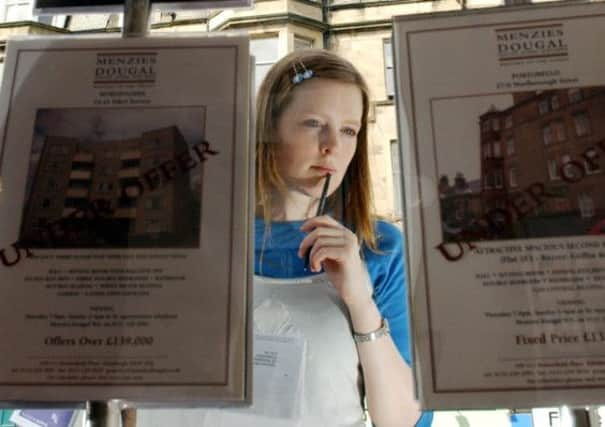Swinney forced into rethink on new property tax


The Finance Secretary will bow to political pressure when he revises the bands and rates of the Scottish Government’s new stamp duty replacement that comes into force in April.
In an embarrassing climb-down in response to a stamp duty cut announced in George Osborne’s Autumn Statement, Swinney will review his plans to impose a 10 per cent tax rate on transactions involving properties worth more than £250,000.
Advertisement
Hide AdAdvertisement
Hide AdThe proposal, which was part of his new Land and Buildings Transaction Tax (LBTT), had been labelled a “tax on aspiration” by the Conservatives, who claimed it would hit hard-working families wanting to buy relatively modestly priced homes.
Yesterday Swinney signalled his intention to revise his original plans. His new plans will be announced to the Scottish Parliament on Wednesday when he sets out Stage I of his budget.
Under his original LBTT plan, Swinney had proposed that no tax would be charged on properties up to £135,000.
Two per cent would be charged on properties between £135,000 and £250,000.
Most controversially, he said that 10 per cent would be charged between properties between £250,000 and £1 million. At the top end of the scale, the levy would be 12 per cent on homes bought for more than £1m.
He has been forced into a rethink after the Chancellor’s Autumn Statement introduced an immediate reform of stamp duty with a less severe rate of five per cent for properties between £250,000 and £925,000.
Stamp Duty will be replaced in Scotland by the LBTT in April when it becomes the first tax to be set by a Scottish Parliament in 300 years.
Under Swinney’s original plans, someone buying a home worth £350,000 would pay £12,300 in LBTT. Whereas under Osborne’s UK Government reforms that are in place at the moment, a £350,000 house will cost just £7,500 in stamp duty.
Advertisement
Hide AdAdvertisement
Hide AdYesterday Swinney released a statement suggesting that he will bring the Scottish plans more into line with the rest of the UK.
Swinney said: “At the time of my proposals – designed for the Scottish market, not London house prices – 90 per cent of homebuyers would have been better or no worse off, and 5,000 homes would be taken out of taxation all together, helping those at the lower end of the market.
“The Chancellor’s decision to introduce a new stamp duty system overnight means that while 80 per cent of homeowners continue to pay less tax or no tax at all under the Scottish system we now have the opportunity to review the rates and ensure they are right for Scotland.”
Swinney’s hand was further forced last week when the Treasury and Scottish Government finalised a deal over the devolution of stamp duty that gives Swinney £64m more than he expected.
The prospect of a LBTT cut was welcomed by the Conservatives. Gavin Brown, the Tory finance spokesman, said: “The eye-watering 10 per cent tax rate has caused concern in many parts of Scotland and is having a distortion on the housing market. There is a clear and obvious way to fix this distortion – the Scottish Government can use the windfall from UK stamp duty changes to create more realistic tax rates with a shallower increase.
“The Scottish Conservatives believe a five per cent rate should replace the 10 per cent rate, as well as an increase in the starting threshold.”